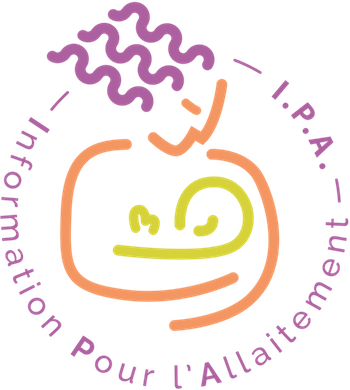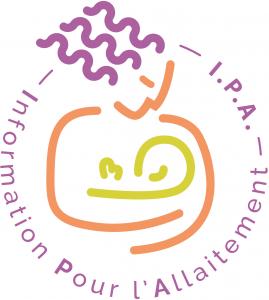Catégories
Documents disponibles dans cette catégorie (25)
 Ajouter le résultat dans votre panier Faire une suggestion Affiner la recherche
Ajouter le résultat dans votre panier Faire une suggestion Affiner la rechercheArticle : texte imprimé
Jenna Mackenzie West, Auteur ; Jessica Power, Auteur ; Kathryn Hayward, Auteur |Background: The demographic of today’s university student includes breastfeeding mothers. Few studies have examined the breastfeeding experience that women face upon their return to school. Research aim: The purpose of this research was to [...]Article : texte imprimé
Laurie K. Twells, Auteur ; William K. Midodzi, Auteur ; Valerie Ludlow, Auteur |Background: Maternal attitudes to infant feeding are predictive of intent and initiation of breastfeeding. Objectives: The Iowa Infant Feeding Attitude Scale (IIFAS) has not been validated in the Canadian population. This study was conducte[...]Article : texte imprimé
Rachel Eni, Auteur ; Wanda Phillips-Beck, Auteur ; Punam Mehta, Auteur |Background: In Canada, First Nations women are far less likely to breastfeed than other women. First Nations people have been subjected to massive health and social disparities and are at the lowest end of the scale on every measure of well-bein[...]Article : texte imprimé
Sandra A. Banta-Wright, Auteur ; Nancy Press, Auteur ; Kathleen A. Knafl, Auteur |Objective: This study described the prevalence and duration of mothers' breastfeeding infants with phenylketonuria (PKU) and explored factors related to duration of breastfeeding as a surrogate for breastfeeding success. Subjects and Methods:[...]Article : texte imprimé
Catherine M. Pound, Auteur ; Kathryn Williams, Auteur ; Renee Grenon, Auteur |Background: Physicians’ attitudes and recommendations directly affect breastfeeding duration. Yet, studies in many nations have shown that physicians lack the skills to offer proper guidance to breastfeeding mothers. Objective: This study a[...]Article : texte imprimé
The accelerating reach of opioid use disorder in North America includes increasing prevalence among pregnant people. In Canada, the rate of Neonatal Abstinence Syndrome (NAS) rose 27% between 2012–2013 and 2016–2017, and it is estimated that 0.5[...]Article : texte imprimé
Sabrina Trigo, Auteur ; Kaitlin Gonzalez, Auteur ; Nicole Valiquette, Auteur |Background: Lactation is a normal postpartum physiological process that can continue in excess of 3 years and is often the sole nutritional source for infants in the first 6 months of life. Breastfeeding not only provides infant nutrition, but a[...]Article : texte imprimé
Julia Temple Newhook, Auteur ; Leigh Anne Newhook, Auteur ; William K. Midodzi, Auteur |Background: Despite high rates of intention to exclusively breastfeed, rates of exclusive breastfeeding in Canada are low. Supplementation may begin in hospital and is associated with reduced breastfeeding duration. Research aim: The aim of[...]Article : texte imprimé
Nicola Geoghegan-Morphet, Auteur ; Doris Yuen, Auteur ; Esther Rai, Auteur |Exclusive breastfeeding is the optimal method of infant feeding for the first 6 months of life for both term and preterm infants. This recommendation is based on indisputable evidence that breastfeeding offers numerous infant and maternal health[...]Article : texte imprimé
Kathryn E. McIsaac, Auteur ; Wendy Lou, Auteur ; Daniel Sellen, Auteur |Background: Very little population-based research has been conducted around the exclusive breastfeeding practices of Inuit Canadians. Objectives: This research aims to assess the distribution of exclusive breastfeeding among Inuit Canadians[...]Article : texte imprimé
Kyly C. Whitfield, Auteur ; Alison K. Ventura, Auteur |Background: Responsive feeding promotes optimal feeding patterns and growth trajectories. Breastfeeding is thought to facilitate responsive feeding, but research to date has been limited to comparing formula-feeding and breastfeeding dyads. Usin[...]Article : texte imprimé
"Full-term newborn normative weight loss and factors influencing this were determined through chart audits (n = 812) at 6 hospitals in Manitoba, Canada. The effects of parity, gestational age, birth weight, sex, length of stay, type of delivery [...]Article : texte imprimé
Rosann Edwards, Auteur ; Wendy Peterson, Auteur ; Joy Noel-Weiss, Auteur |Background: Young mothers have the lowest breastfeeding rates in Canada. Young mothers and their infants who access maternity shelters are especially at risk for poor outcomes, some of which breastfeeding may help to mitigate, yet little is kno[...]Article : texte imprimé
Catherine Pound, Auteur ; Natalie Ward, Auteur ; Marine Freuchet, Auteur |Background: Adherence to Baby Friendly Initiative (BFI) practices is low in Canadian hospitals, despite evidence showing a positive impact of BFI practices on breastfeeding rates and duration. In 2012, the provincial Ontario Ministry of Health [...]Article : texte imprimé
Amanjot Sandhu, Auteur ; Sharla Fast, Auteur ; Kari Bonnar, Auteur ; Ronald John Baier, Auteur ; Michael Narvey, Auteur |Objective: To describe the results of utilizing a human milk-based human milk fortifier (HMHMF) as rescue therapy to meet nutritional requirements in very low birth weight and preterm infants demonstrating feeding intolerance to bovine-based hum[...]Article : texte imprimé
Meghan B. Azad, Auteur |The increasing prevalence of chronic diseases, such as allergies, asthma, and obesity, may be linked to early life exposures and experiences during critical periods of prenatal and early postnatal development. The CHILD study is a prospective lo[...]texte imprimé
Nicole Doré, Auteur ; Danielle Le Hénaf, Auteur | INSPQ - Institut national de santé publique | 2017Un guide pratique destiné aux mères et pères qui offre une information appuyée scientifiquement sur la grossesse, l’accouchement et les deux premières années de vie de l’enfant.[Présentation par IPA]Article : texte imprimé
K Cadwell, Auteur ; Anna Blair, Auteur ; C Turner-Maffei, Auteur |Background: According to the Intergovernmental Panel on Climate Change, Greenhouse Gas emissions must decline by around 45% by 2030 and reach net zero in 2050. Biofuels, solar, and wind energy are obvious choices for reduction of the 75% of emis[...]Article : texte imprimé
Nouf M. AlKusayer, Auteur ; William K. Midodzi, Auteur ; Leigh Anne Newhook, Auteur |Background: The 17-item Iowa Infant Feeding Attitude Scale (IIFAS) has been widely used to assess maternal attitudes toward infant feeding and to predict breastfeeding intention. The IIFAS has been validated among prenatal women located in Newf[...]Article : texte imprimé
Katherine Russell, Auteur ; Amira Ali, Auteur |Background: In Ontario, Canada, breastfeeding in public is a protected right, yet even with these laws, attitudes toward breastfeeding in public can serve as a barrier to breastfeeding. Research aim: This study assesses public support for b[...]Article : texte imprimé
Alissa Vieth, Auteur ; Janine Woodrow, Auteur ; Janet Murphy-Goodridge, Auteur |Background: The acceptance and support of breastfeeding in public venues can influence breastfeeding practices and, ultimately, the health of the population. Objective: The primary aim of this study was to investigate whether posters target[...]Article : texte imprimé
PJ Martens, Auteur |Sagkeeng First Nation's adolescent breastfeeding educational session was evaluated using a randomized pretest-posttest control group design. The intervention group received the session first; the control group received the session following the [...]Article : texte imprimé
Ugochinyere Vivian Ukah, Auteur ; Prince A. Adu, Auteur ; Dane A. De Silva, Auteur |Background: Exclusive breastfeeding is strongly recommended by the World Health Organization. Given the low rate of exclusive breastfeeding in Canada and the increasing reports of a history of adverse childhood experiences, this study sought to [...]




























